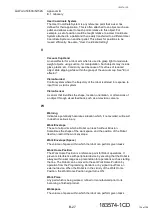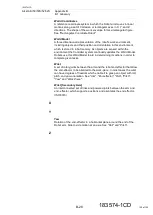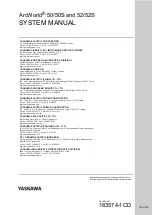
B-23
183574-1CD
183574-1CD
Appendix B
B.1 Glossary
ArcWorld 50/50S/52/52S
Sensory Feedback
Variable data measured by sensors and relayed to the Controller in a
Closed-loop System. If the Controller receives feedback that lies outside
an acceptable range, then an error has occurred. The Controller sends an
error signal to the robot. The robot makes the necessary adjustments in
accordance with the error signal.
Servo Control
The process by which the control system of the robot checks if the
attained pose of the robot corresponds to the pose specified by the motion
planning with required performance and safety criteria. (ISO 8373)
Servo Motor
An electrical power mechanism used to effect motion or maintains position
of the robot (for example, a motor which converts electrical energy to
effect motion of the robot) (R15.07). The motor responds to a signal
received from the control system and often incorporates an encoder to
provide feedback to the control loop.
Servo Pack
An alternating, current electrical power mechanism that is controlled
through logic to convert electrical supply power that is in a sine wave form
to a Pulse Width Modulated (PWM) square form, delivered to the motors
for motor control: speed, direction, acceleration, deceleration and braking
control.
Servo-controlled Robot
The control of a robot through the use of a Closed-loop Servo-system, in
which the position of the robot axis is measured by feedback devices and
is stored in the Controller's memory. See Closed-loop System and Servo-
system.
Servo-system
A system in which the Controller issues commands to the motors, the
motors drive the arm, and an encoder sensor measures the motor rotary
motions and signals the amount of the motion back to the Controller. This
process is continued many times per second until the arm is repositioned
Shock Detection Function
Shock detection is a function supported by the Controller that reduces the
impact of a robot collision by stopping the Robot without any external
sensor when the tool or the Robot collide with a peripheral device.
Shoulder
The first or second axis of a robot is sometimes referred to as a shoulder
axis as it somewhat resembles a human shoulder. This is often used in
describing humanoid or dual-arm systems such as the YASKAWA
Motoman® SDA10D.
SIL
120 of 126





















